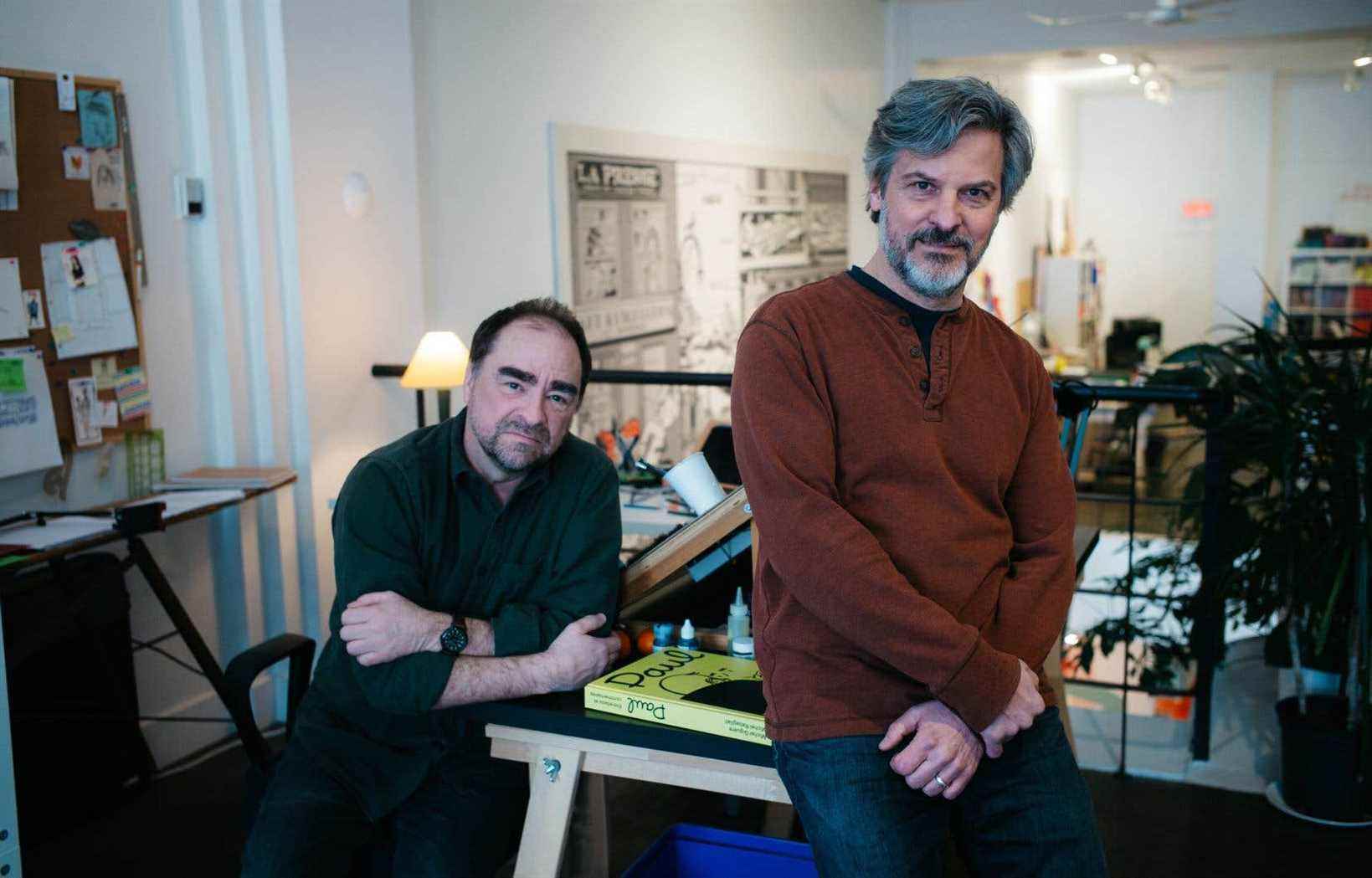The author Michel Rabagliati may feel a certain uneasiness to see his work as well dissected as in this immense brick entitled Paul. Interview and comments, the fact remains that, as the English say, the proof is in the pudding! Because, if you were not yet a fervent admirer of Paul’s adventures, there is a very good chance that you will become one after reading this in-depth analysis conducted like a conversation of which we, the readers, are privileged witnesses.
This is the bet that the cultural mediator in comics Michel Giguère has decided to take up who, after a little more than thirty years spent transmitting his solid knowledge on the subject, finally decides to go into writing. . In fact, it took the Rendez-vous de la BD de Québec, hosted by Giguère and for which he received the author a few times, and a pandemic for him to finally decide to propose this project to Michael Rabagliati.
However, anyone who has ever had the chance to discuss with the creator of Paul knows that this kind of exercise is not natural for him.
Michael Rabagliati. Yes ! It’s quite narcissistic as an exercise. Someone wants to talk to me. Am I comfortable with this? Am I too young or shouldn’t we be doing this on my deathbed?
Michel Giguere. In fact, you said no for a long time, as far as I know!
MR I don’t like it, showing off and monopolizing attention. I’m not the type to go peddler my books in book fairs, I prefer to keep a low profile.
In Quebec, talking about yourself can very quickly be seen as being a bit narcissistic. What I like, on the other hand, about this project, is that it goes through Michel Giguère. He is the channel. I ended up saying yes because I like it, what he does, and I like it, comic book reviews, like I love movie or novel reviews. And that’s what he did, Michel, because I couldn’t have done it.
But who is this book aimed at? Because if we are not dealing with a technical treatise on the construction of a comic, it is still a rather in-depth analysis…
MG It is for people who like to read. It is an invitation to go further. They did not know Rabagliati from the cradle, when he began to draw. They met him when Paul’s first album came out in 1999. That’s why this book starts there, to break up the chronology of events a bit, before going to draw on Paul’s childhood memories. Michael. And, slowly, we move on to tougher stuff, like cutting work, for example. I take readers with me, behind the scenes, to see how it all works.
MR Just as a reader who would like to make comics himself could find stuff, too!
Obviously, as this kind of proposal does not happen every day, it is impossible not to ask Michel Rabagliati if he learned things about his own work.
MR Oh yes ! There are things that Michel has seen, that I have done instinctively. Me, I’m a worker, I’m in the work more than in thinking about how I could tell a particular piece of history.
When I started doing comics, I already had all the tools, because I read so much when I was little. Just Tintin, it’s a school.
So it was impressive to see Michel Giguère find, in my boards, how he illustrated certain aspects of my creation that I put there without really thinking about it.
MG In fact, the sense of storytelling is a bit like a sense of humor or like when you start a fire. You don’t start analyzing how you placed your wood when it burns!
There are narrative processes that I have been explaining for years. In fact, the challenge here was to limit myself to a single creator and to find, in the work of Michel Rabagliati, what I needed to pay homage to it. For me, my revelation is to see how rich it is. I had access to a big toy chest, in which there were all the toys I needed. Far from the instruction manual, or a critical analysis that could be read as a work in literary studies, we rather have both feet in the creative and sensitive process of one of our most important and most interesting over the past twenty years. With, as a bonus, dozens of reproduced boards, including several unpublished. It is a very nice gift.
These ideas that change the world
